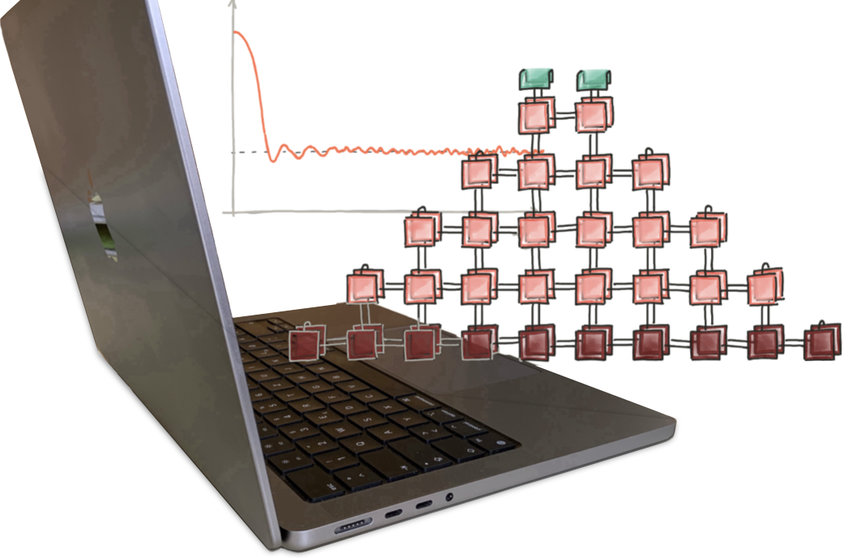
Tensor Network Algorithms and Applications
Dr. Dr. Mari Carmen Bañuls
In her research, Mari Carmen Banuls focuses on the development and application of Tensor Network methods for the numerical simulation of quantum many body systems and non-equilibrium dynamical problems.
Tensor Networks for quantum many-body physics
The term Tensor Network States (TNS) has become a common one in the context of numerical studies of quantum many-body problems. It refers to a number of families that represent different approaches for the efficient description of the state of a quantum many-body system. The paradigmatic application of these techniques, in the context of condensed matter physics, has been the solution of one dimensional spin problems using Matrix Product States (MPS). This family of states lies at the basis of the Density Matrix Renormalization Group method, which has become the most precise tool for the study of one dimensional quantum many-body systems in regimes where analytical tools cannot be used. But the potential of TNS extends far beyond such problems, and promising extensions include the natural generalization of MPS to higher dimensions and the applications to dynamics.
TNS and non-equilibrium dynamics
One significant research direction is the development of Tensor Network tools for the investigation of non-equilibrium dynamical problems. Even in one spatial dimension, the physics of systems out-of-equilibrium holds unsolved fundamental questions, for instance about thermalization. The applicability of analytical techniques is limited, and non-perturbative methods are necessary to study the most general scenarios. Although the most standard MPS algorithms suffer also from severe limitations in these scenarios, the Tensor Network toolbox allows us to overcome some of the problems and to look at time dependent quantities in novel ways. As a particular example, the description of operators, as opposed to states, as tensor networks has provided us with a new method to study long-time properties without simulating the full dynamics. This technique can be applied now to explore the many body localization scenario.
TNS and lattice gauge theories
Another research direction that has proven fruitful in the last few years is the application of the tensor network toolbox to quantum many-body problems outside the realm of condensed matter physics. In particular, we have used MPS and related tools to perform extremely accurate numerical calculations of quantum gauge theories, following the strategy of lattice gauge theory (LGT) computations, for spectral properties, thermal equilibrium states and dynamics.